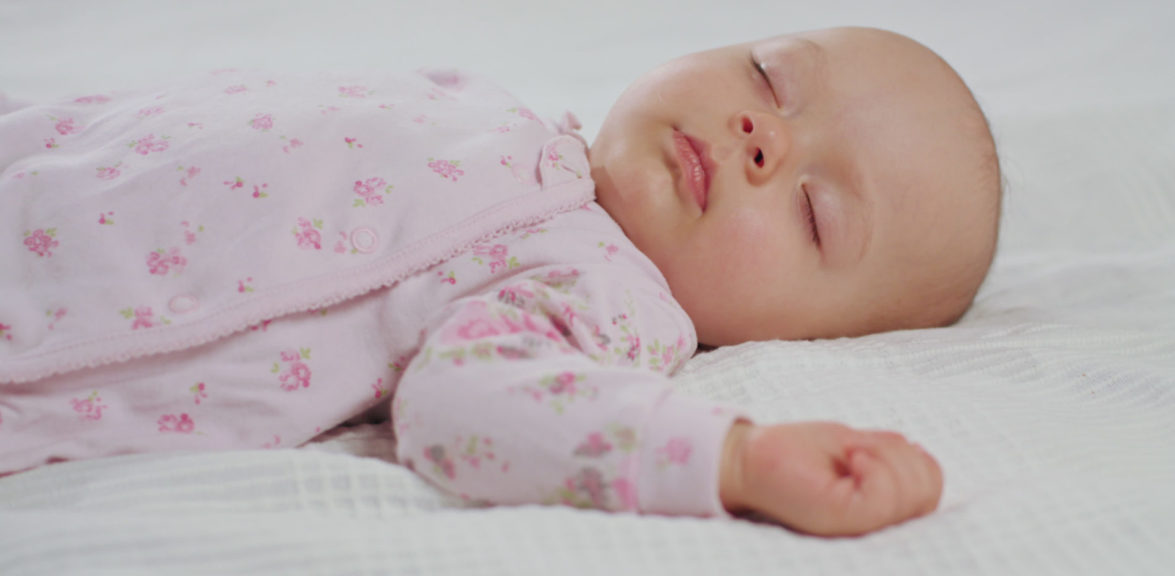Sudden infant death syndrome is the the number-one cause of death in babies between a month and a year old, according to the Eunice Kennedy Shriver National Institute of Child Health and Human Development.
“In many, many instances, SIDS occurs because of internal causes that are impossible for anyone to control — for example, a genetic reason,” explains Rady Children’s Hospital-San Diego physician Daniel Hershey, MD. However, there are also a number of external causes that parents and caregivers can change in order to help reduce a baby’s risk. These include the following:
- Smoking: The Centers for Disease Control and Prevention report that when babies are exposed to smoke, even secondhand smoke, their risk for SIDS goes up. Studies indicate that babies who have died from SIDS have more nicotine in their lungs, as well as more evidence of secondhand smoke exposure, compared to babies who have died due to other causes. Danger can begin to build during pregnancy if an expectant mother smokes, but even if the mom does not smoke ever, there is increased risk for the baby if the father smokes. To help avoid this, pregnant women should not smoke, and all adults should not smoke near a baby[1]. “If you do smoke, do it outside, and wash your hands and change clothes before coming into contact with an infant,” adds Dr. Hershey.
- Temperature control: Babies cannot fully control their body temperatures, so it is important not to dress them in too much clothing. Research has found that high indoor temperatures and over-bundling babies, whether in blankets or clothing, contribute to SIDS risk[2]. “As a general rule, particularly in somewhere like Southern California, babies are okay in a simple onesie when inside,” Dr. Hershey says. Infants should have a level of clothing similar to that of other household members. For instance, if everyone is wearing shorts, then a jumper and a blanket would likely be excessive.
- Position: Placing a baby on their back to sleep is the most effective way to reduce SIDS risk. Some researchers think this is because a baby can breathe and regulate body temperature more easily on their back; others point to reasons such as a better ability to react to surrounding noises and control heart rate. No matter the exact link, back-sleeping keeps babies are safer than stomach-sleeping, per the American Academy of Pediatrics Task Force on Infant Sleep Position and Sudden Infant Death Syndrome[3].
Because of this, back-sleeping is one of three key guidelines experts from the Safe Sleep San Diego program at Rady Children’s Center for Healthier Communities suggest caregivers follow every time they put an infant to bed, even for a quick nap, to help to reduce the risk for SIDS and sleep-related deaths. The ABCs of safe sleep say a baby should always sleep
- A: ALONE, without extra bedding, pillows, stuffed animals or other people;
- B: on their BACK, rather than their stomach or side; and
- C: in their CRIB, not on a couch, chair, adult bed or other soft surface.
Along with the ABCs, core safe sleep recommendations include the following:
- Make sure babies sleep on a firm surface, such as an infant-approved crib mattress, and cover the mattress with a fitted sheet that wraps two or more inches underneath.
- Share your room with your baby, not your bed.
- Keep in mind that pacifiers may help protect against SIDS. If you choose to use a pacifier (some prefer to wait until breastfeeding is well-established), use a simple one without strings, clips or other attachments.
- Avoid having babies sleep in a car seat when not inside a car.
- Avoid having babies sleep in a swing, rocker or other device that requires strapping them in. If they fall asleep, transition them to their crib.
- When traveling, bring a Pack ‘n Play or similar portable crib so your baby has a safe place to sleep.
Through Safe Sleep San Diego, Rady Children’s teams up with local parents and caregivers about safe sleep practices. The Hospital is also part of a Safe Sleep Task Force in partnership with the County of San Diego, and has set forth an organization-wide policy on safe sleep practices that is based on guidelines from the National Institutes of Health, the American Academy of Pediatrics and Cribs for Kids®.
With a few simple actions, caregivers can create the safest possible sleep environment for babies. For more information on safe sleep and the Rady Children’s Safe Sleep San Diego program, visit the Hospital’s website. Members of our community are also invited to visit the Center for Healthier Communities’ Safety Store to shop for recommended safe sleep products and chat with child safety experts.
[1] https://www.cdc.gov/tobacco/data_statistics/fact_sheets/secondhand_smoke/health_effects/index.htm
[2] https://www.nih.gov/news-events/news-releases/nih-alerts-caregivers-increase-sids-risk-during-cold-weather
[3] https://safetosleep.nichd.nih.gov/research/science/backsleeping

Post a Comment
You must be logged in to post a comment.